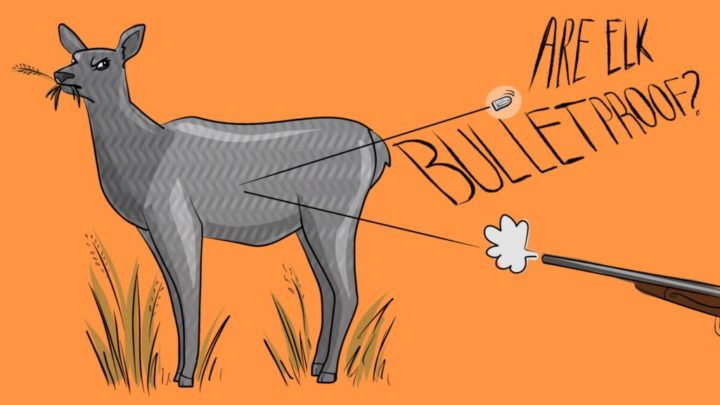Study finds adult female elk are badass and can’t be caught

Older female elk may prove to be nearly impossible to find this hunting season, according to new research from the University of Alberta.
A study from Mark Boyce, a U of A ecology professor, found adult female elk are nearly “bulletproof” in their ability to hide from hunters. Over their lifetime, the female elk, also called cows, learn defensive strategies and change their habitat based on the hunting season and the type of hunters they encounter. Boyce said it’s important to understand how to control hunting to help conservation.
“Humans are having more and more influence on animal populations,” he said.
Using GPS trackers, Boyce observed the change in terrain used by elk cows over six years. When he analyzed the data, he found elk evolved over generations to avoid hunting and were capable of changing their behaviour during their individual life spans to stay safe. Evolution occurred when elk who weren’t good at avoiding hunting died before reproducing. Learning happened when individuals changed their behaviour based on their own experience. Both effects contribute to the survivability of old elk.
“There was selection for shy behaviour,” Boyce said. “But compared to young elk, the matriarch, the oldest female in a herd, is nearly bulletproof.”
Despite elk’s ability to adapt, the North American population was nearly wiped out around the turn of the 20th century. These declines were caused “almost without a doubt by market hunting,” Boyce said. Hunters would take elk for products they could sell as luxury items, like hides and antlers. No controls led to far more hunting than the population could recover from.
Despite this loss, elk have been reintroduced to some success. The Yellowstone population remained strong, which was crucial in reintroducing elk to other regions. Boyce now teaches that understanding the effects of hunting on populations is necessary for preventing similar overhunting.
“(These elk) used to go coast to coast,” he said. “Now they are abundant in the Rocky Mountains, Vancouver Island, Northern Canada, Saskatchewan, Manitoba, and Ontario.”
Both the government and industry have taken an interest in elk populations and jointly funded Boyce’s research through a Collaborative Research and Development Grant in which the Natural Sciences and Engineering Research Council matched the funding provided by Shell for the project.
Boyce said grants like these are a “win-win” for companies like Shell because if it turns out an area needs to be protected, Shell may find public relations success because of its role in funding research protecting elk. But if the area doesn’t need to be protected, Shell may be able to get restrictions on their operations lifted.
Although elk management has helped restore the population, anyone can help through their behaviour, Boyce said. Frequent drivers, hikers, berry pickers, hunters, and campers risk making an area unusable by elk.
In the end, Boyce said responsible hunting is not a threat to the species.
“We’ve gotten really good at (managed hunting)” Boyce said. “Sweden claims nearly 100,000 moose a year without endangering the population.”




